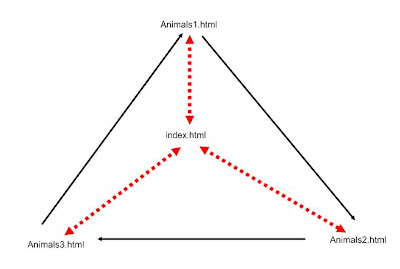
Audio material is regularly used when teaching speaking and listening in foreign languages. Therefore the teachers and the students should be able to edit and modify audio as well as texts.
Probably the best freeware available for editing sound is called AUDACITY.
Audacity Basics - you should be able to
- install Audacity and the lame library which enables export to mp3
- open a file in Audacity
- edit the file: cut and paste, fade in/out, change speed, delete, add silence
- create a new file
- combine two files (e.g. speech + background music)
- inserting silence (e.g. as a space for an answer)
- changing the speed or pitch (carefully!)
TASK 1 - TEACHER'S JOB - THE SEARCH
View, listen and choose; consider the topic, level, speed, quality of language, accent...
Convert the video to mp3 using an online convertor.
Cut out a part of the recording, and publish in your webpage - it is almost the same process as inserting an image.
You can use Free YouTube to MP3 Converter to get audio from youtube easily, or find free online converters. Be careful what you click on, this type of software often brings unwanted installations or even viruses!
- to be done in groups of 3
- output: original, self-recorded audio, cca 10'
- a simulated interview with a famous English writer about his life and books
- OR a dramatisation of a part of a book or a play
Aim: to be able to find relevant and interesting facts online, and transform them into one’s own text; practicing language and pronunciation
Tips:
Communicate online within the group, decide who wil record what. Using audacity, you can even create a dialogue!
Record, listen, re-record, listen, re-record... focus on quality!
Edit the recording in Audacity. Record and add appropriate sounde effects if suitable.
Finalise the file, export it and save as mp3, and add to your personal webpage (each member of the group).
TASK 3 - EXAMPLES OF GOOD TEACHING PRACTICE
Choose an online audio resource - a podcast or TED. Listen, and share the link and your opinion in the comments to this blog entry.
What does the word "podcast" mean? Go to Podomatic, create an account and browse the site. How can we use it in teaching English?
Good examples - Teacher Luke, Splendid Speaking for advances learners
Podcast on podcasting in ELT
More online podcasts and streams
Ted Talks on Education - free online lectures!
Paramind
Oxford University Podcasts
Free text to audio:
http://www.fromtexttospeech.com/
EXTRAS
Sound files extensions:
wav - Standard audio file container format used mainly in Windows PCs. Commonly used for storing uncompressed (PCM), CD-quality sound files, which means that they can be large in size—around 10 MB per minute. Wave files can also contain data encoded with a variety of (lossy) codecs to reduce the file size (for example the GSM or MP3 formats). Wav files use a RIFF structure
mp3 - compressed, MPEG Layer III Audio. Is the most common sound file format used today
flac - Free Lossless Audio Codec
ape - Monkey's Audio lossless audio compression format
ogg - A free, open source container format supporting a variety of formats, the most popular of which is the audio format Vorbis; compression similar to MP3
webm - Royalty-free format created for HTML5 video
aiff - Standard audio file format used by Apple. It could be considered the Apple equivalent of wav
ref: https://en.wikipedia.org/wiki/Audio_file_format
Sluchové pole (nebo oblast slyšitelnosti) je rozsah všech zvuků, které dokáže lidské ucho vnímat. Vnímání zvuku je u člověka omezeno slyšitelnými frekvencemi (přibližně 16–20 000 Hz). U každé frekvence je odlišný rozdíl intenzit, jež slyšíme. Lidský sluchový orgán je nejcitlivější v oblasti frekvencí 1–5 kHz.
http://www.wikiskripta.eu/index.php/Pr%C3%A1h_sluchu_a_sluchov%C3%A9_pole





